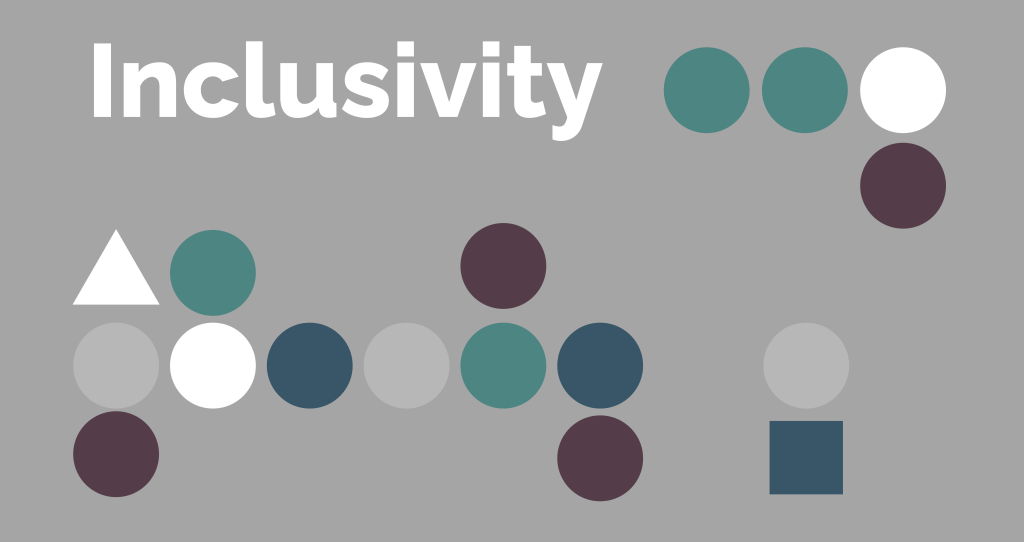How can we ensure that as many people as possible are considered in the UX design process? Are we prioritizing inclusivity when we are developing the designs of tomorrow? These are the sorts of questions that are necessary for progress in the world of digital design. Below we explore the importance of inclusivity in UX design, how it can improve the design, and how inclusivity can be maintained throughout the industry.
What does inclusivity in UX design mean?
No two people are alike. This is an essential thing for UX designers to remember. There are so many ways to categorize people that it would take another article to describe them all. Everyone has unique needs, wants, and characteristics.
Inclusivity in design is about recognizing that we have a responsibility to acknowledge, create, design, and serve as many people as we can. Users will typically come from a vast array of backgrounds, both economic and ethnic, will be of different genders, and have additional physical capabilities. And these are just a few of the factors that need to be considered in discussions about inclusivity. Inclusivity in design means that anyone should use your design and achieve successful results. Inclusivity in design also means anyone should contribute to the development process. If designs are only made by one type of person with only one kind in mind, the design is bound to fail when presented to a diverse user base.
Why is inclusivity in UX design important?
The consequences of not embracing inclusivity can be enormous. For example, initially, Apple Health launched without a simple period tracking function which effectively excluded half of their users from properly experiencing their product. Similarly, research has shown that cars are 71% less safe for women because crash test dummies are primarily based on the male physique. This shows how our products are designed mainly by one kind of person. Unfortunately, it can be easy to forget to represent everyone.
Inclusivity doesn’t merely mean accessibility. Even the word ‘Accessibility’ can be reductive and create an “Us versus Them” dynamic. Inclusivity doesn’t mean creating a base product that suits one type of person and adding bits and pieces to your design to include ‘other’ types of people. Inclusivity must be at the root of the creative process. This will help to ensure innovative and enduring solutions are made that serve a broad and diverse user base. When we look at it from a viewpoint that at any point in time, we might have to change the way we operate in this world, it becomes easier to empathize with others. Therefore, designers must put themselves in the shoes of their users and understand how they serve them as best as possible.

How can we achieve and maintain inclusivity in UX Design?
While it’s often said that you can’t make everyone happy, the second best thing to recognize is that we, as designers, are not our users. This means recognizing our own biases and understanding the perspective of our users. To design is to empathize, not merely sympathize, intending to improve the world around us. In practical terms improving inclusivity in UX design may mean diversity in decision making, research groups, meeting rooms, etc. Equally, being inclusive means being thorough in how we think about how diverse users can use our designs. Inclusivity should inform every stage of the design and development process. For example, designers should constantly be questioning themselves when creating a web page. First, they might ask, “Who is the target audience for this page?” or “How can I expand the options available on the page and widen that target audience?” Then they might ask themselves, “How accessible is the page to someone who is partially sighted?” or “How accessible is the page to someone who does not have English as their first language?”. This self-scrutiny is key to creating and maintaining inclusive designs.
Here are some literal examples:
1. Consider Users with Reading Disabilities
2. Optimize Clicks and Navigation
3. Provide Captions or Transcripts
4. Offer Multiple Options for Contact
And here are some more general examples:
1. Provide a comparable experience for all users
2. Consider situational differences in location, interaction, and ability
3. Be consistent with user patterns and functionality
4. Give control to users when it makes sense
5. Offer choices and alternative user journeys
6. Prioritize content with one thing to do or focus on at a time
7. Add value with features, content, and visual frameworks
All of the examples have one goal in mind: inclusivity in UX design. Hopefully, you will take some of the tips on board and continue creating designs that serve all kinds of users.
To learn more about inclusivity and innovation in UX design, reach out to our UX experts at Radiant Digital.


